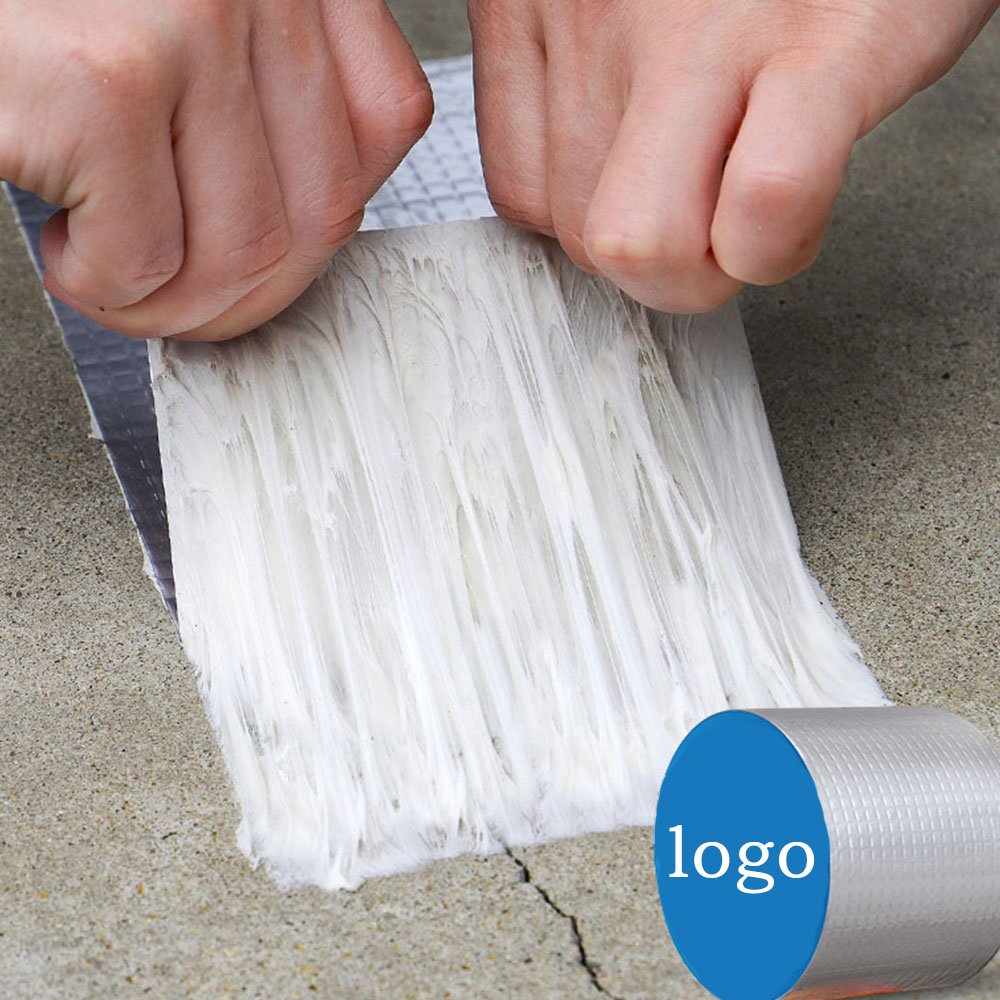Butyl tape and putty tape are both adhesive materials used for sealing and bonding in various applications, but they have distinct differences in terms of composition, properties, and ideal uses. Here’s a comparison of the two:
What Is Butyl Tape:
Composition: Butyl tape is primarily made from butyl rubber, a synthetic rubber known for its excellent sealing properties. It is typically a flexible, tacky, and adhesive material.
Sealing Properties: Butyl tape excels at creating a waterproof, airtight seal. It adheres well to a variety of surfaces and maintains its sealing effectiveness over time.
Applications: Butyl tape is commonly used in construction, roofing, automotive, and industrial applications. It is ideal for sealing joints, seams, and overlaps in materials such as metal, plastic, glass, and wood.
Flexibility: Butyl tape remains flexible and pliable even in extreme temperatures. This property allows it to accommodate movement and expansion in materials without losing its sealing ability.
Sound Dampening: Butyl tape is known for its sound-dampening qualities, making it suitable for reducing noise and vibrations in automotive and construction contexts.
What Is Putty Tape:
Composition: Putty tape, also known as butyl putty or glazing putty, is composed of butyl rubber mixed with fillers like clay or minerals. It has a putty-like consistency that is less adhesive than butyl tape.
Sealing Properties: Putty tape is primarily used for creating a watertight seal around windows and doors. It is particularly effective for sealing glass and frames in construction and RV applications.
Applications: Putty tape is most commonly employed in glazing applications in construction and for sealing windows, doors, and vents in recreational vehicles (RVs). It provides a cushioning effect and a seal that helps prevent water infiltration.
Flexibility: Putty tape is somewhat flexible, but it may not maintain its flexibility to the same extent as butyl tape in extreme temperature variations.
Ease of Removal: Putty tape is easier to remove compared to butyl tape. This ease of removal is beneficial in applications where periodic maintenance or replacements are necessary.
In summary, while both butyl tape and putty tape have their uses in sealing and bonding, their differences lie in their composition, sealing properties, applications, flexibility, and ease of removal. Butyl tape is more versatile, adhesive, and suitable for various sealing purposes, including construction and automotive. Putty tape, on the other hand, is specifically designed for window and door sealing in construction and RV settings, offering a cushioning effect and ease of removal.
What is The Difference of them?
Whether you should use butyl tape or putty tape boils down to the job at hand. While putty tape comes out on top for jobs where you need a quick and affordable fix that doesn’t need to stand the test of time, butyl tape is superior in most situations. Its adhesion, flexibility, and longevity make it ideal for many repair and construction situations. Below are a few common uses for butyl tape.
Surfaces Exposed to Vibration and Motion
Car and RV parts, motorhomes, boats, travel trailers, and anything else frequently exposed to movement and vibration should use butyl tape. Since this tape will maintain its flexibility and is less likely to dry out, it is less prone to cracking with movement. Instead, it will move with whatever you put it on. Stashing a roll in the vehicle is ideal for quick patch jobs that will give you time to get to a garage.
Decks
Using butyl tape on your deck will protect its substructure. It can seal deck fasteners and screws, prevent moisture penetration and rot, eliminate splitting from freezing and thawing, and cushion joist hangers. Lastly, Trex Protect butyl tape can even make deck installation safer by providing a non-skid surface. Try the materials estimator to see how much butyl tape your deck project requires.
Environments with Moisture or Extreme Temperatures
When it comes to being exposed to high heat, frigid weather, and moisture, butyl rubber tape maintains its adhesion and flexibility. These qualities, combined with its airtight and waterproof barrier, make it ideal for outdoor repairs and installations, sealing heating ducts, and other projects where extreme temperatures or moisture are present.
Windows
Installing new windows, especially those with odd curves, is made easier with butyl tape. However, for previously installed windows with leaks, silicone caulk or butyl caulking can be easier to apply.
Water Pipes
To temporarily block minor leaks, butyl tape is always up to the task. It is the ideal quick fix that will buy you time to grab new parts and locate any additional leaks.
EPDM Rubber Roofs
The best option for EPDM roof repairs and additions is hands down butyl tape. It not only easily adheres to the surface, but the petroleum products found in putty tape can break down this type of roof over time.













